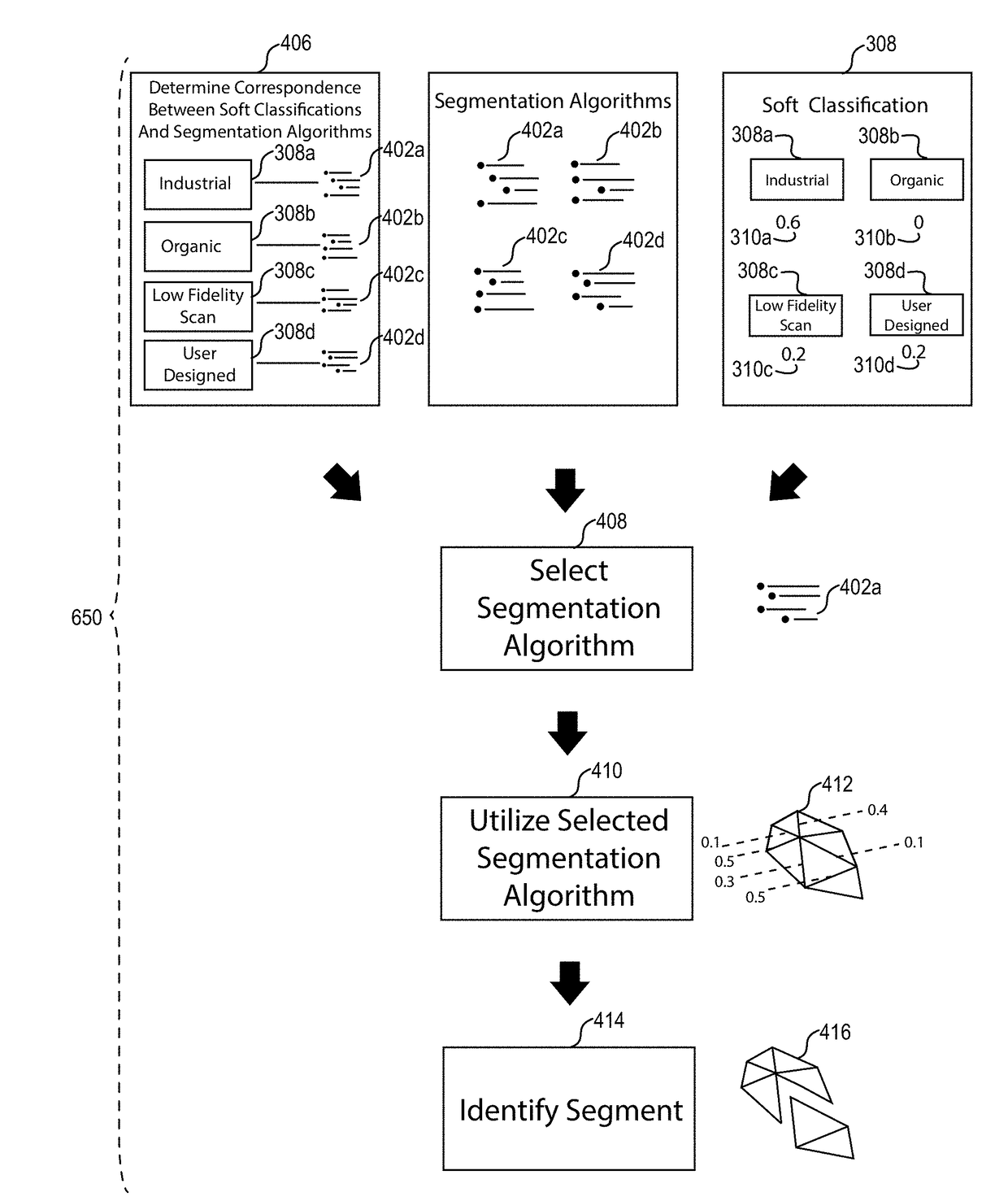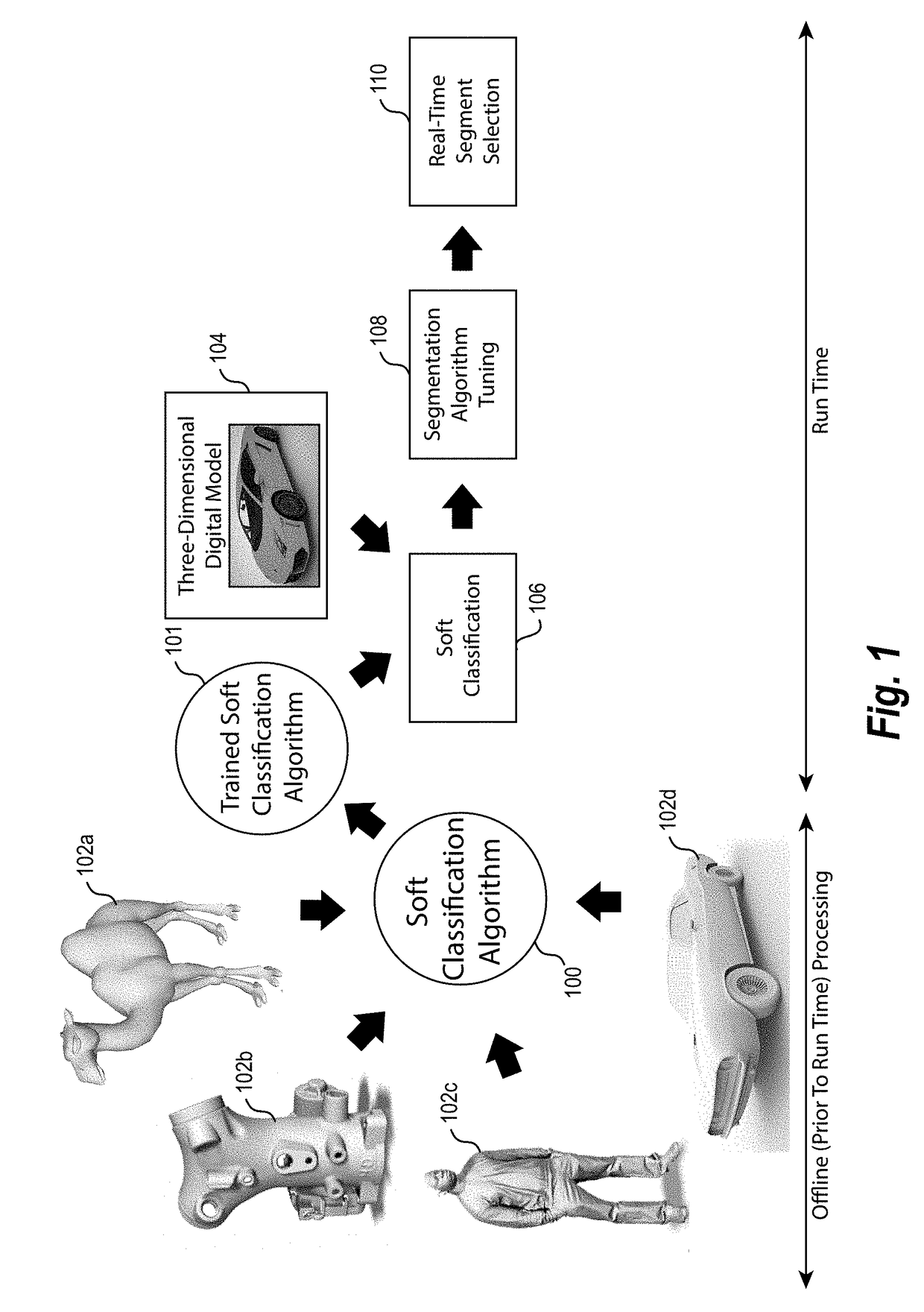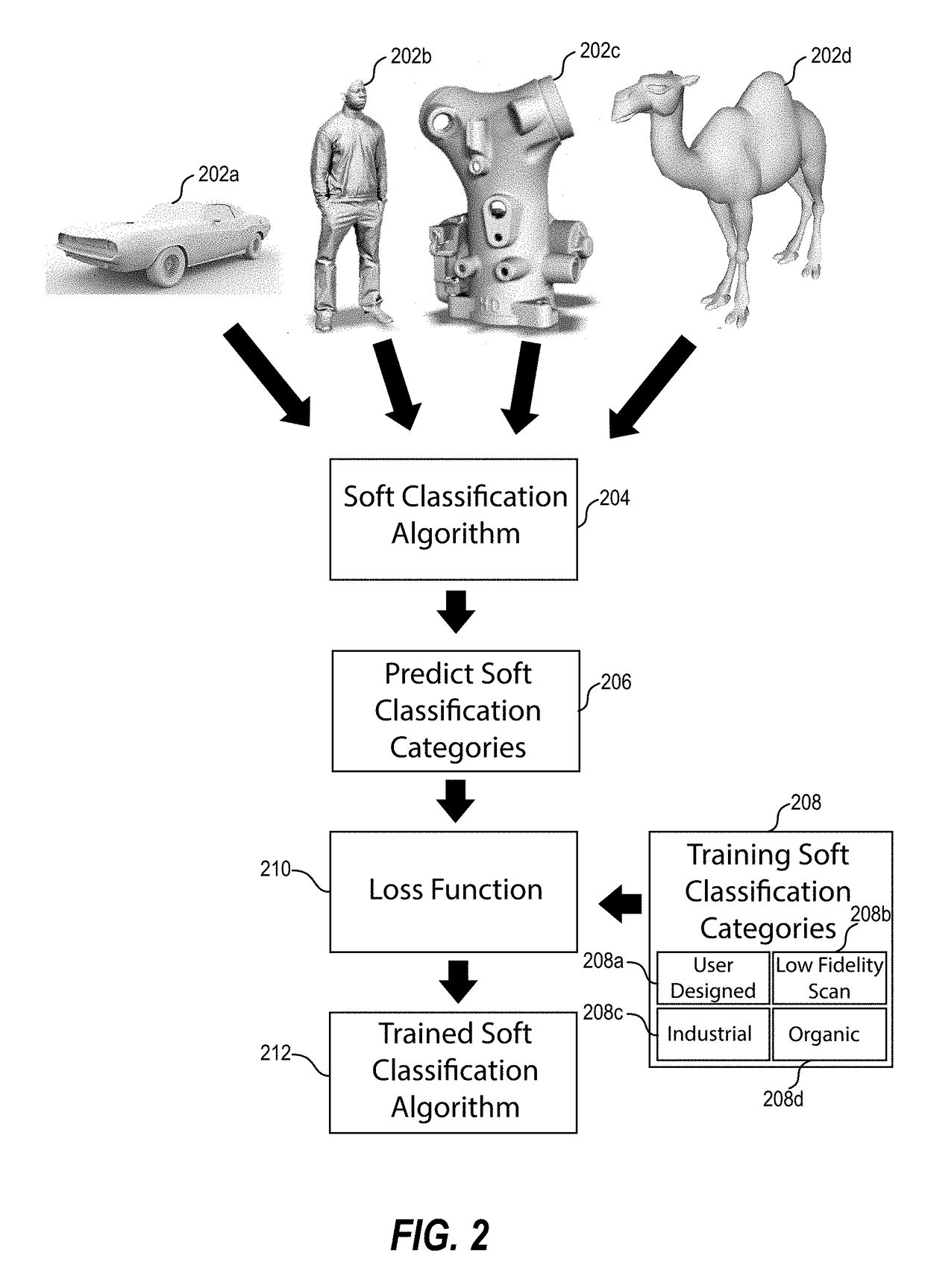Three-dimensional segmentation of digital models utilizing soft classification geometric tuning
a technology of geometric tuning and three-dimensional digital modeling, applied in the field of three-dimensional digital modeling, can solve the problems of inability to accurately identify (e.g., select and manipulate) segments of three-dimensional digital models across a wide array of model types, and users express frustration with conventional modeling systems. achieve the effect of accurately identifying segments of three-dimensional digital models and accurate identification of segments
- Summary
- Abstract
- Description
- Claims
- Application Information
AI Technical Summary
Benefits of technology
Problems solved by technology
Method used
Image
Examples
Embodiment Construction
[0020]One or more embodiments of the present disclosure include a digital segmentation system. In particular, in one or more embodiments, the digital segmentation system identifies a soft classification corresponding to a three-dimensional digital model and utilizes the soft classification to identify a segment of the three-dimensional digital model. For example, the digital segmentation system can determine a soft classification corresponding to a digital model and then utilize the soft classification to select one or more segmentation algorithms and / or one or more input parameters to utilize in identifying a segment of the digital model. Moreover, in one or more embodiments, the digital segmentation system utilizes a soft classification to select segmentation algorithms and then combine segmentation parameters from the segmentation algorithms (e.g., a mixture of experts tuning approach to generating mixed segmentation parameters). The digital segmentation system then utilizes the ...
PUM
 Login to View More
Login to View More Abstract
Description
Claims
Application Information
 Login to View More
Login to View More - R&D
- Intellectual Property
- Life Sciences
- Materials
- Tech Scout
- Unparalleled Data Quality
- Higher Quality Content
- 60% Fewer Hallucinations
Browse by: Latest US Patents, China's latest patents, Technical Efficacy Thesaurus, Application Domain, Technology Topic, Popular Technical Reports.
© 2025 PatSnap. All rights reserved.Legal|Privacy policy|Modern Slavery Act Transparency Statement|Sitemap|About US| Contact US: help@patsnap.com



